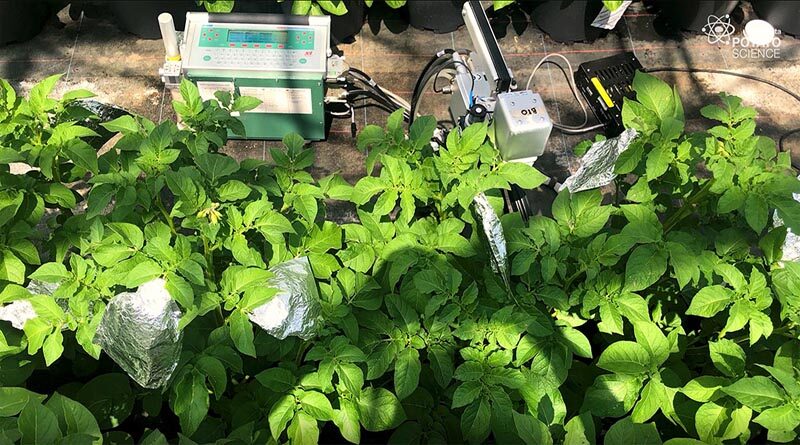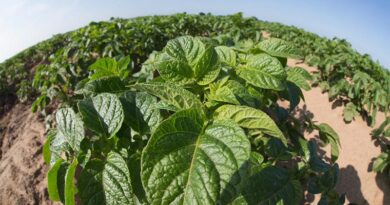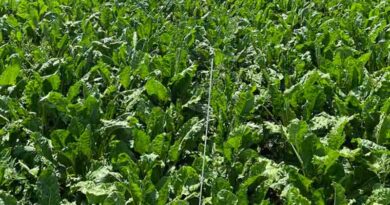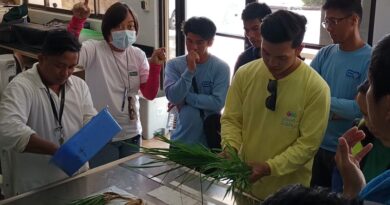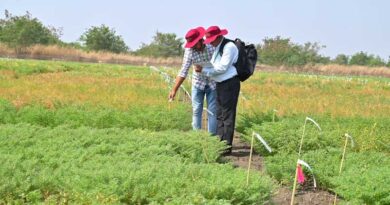Potato response to heat stress revealed in University research
21 March 2022, UK: New in-depth research at the University of Nottingham has given an insight in to how the biostimulant Quantis acts inside the potato plant, to make it better able to withstand the detrimental effects of heat.
Dr Rumiana Ray, Professor of Plant Pathology, highlighted modern potato varieties are adapted to grow at optimum temperatures of between 14⁰C and 22⁰C, with long day conditions.
Elevated temperatures, beyond 28C, can cause profound effects on several physiological development processes,” she warned.
“Those effects include on stem elongation, inhibition of tuberisation, decrease in the rate of photosynthesis and biomass partitioning.”
She explained that the photosynthetically active leaves act as a source of sucrose, translocated by the phloem to the developing tubers, that act as carbohydrate sinks. “However, heat stress or other extreme environmental stress can alter plant hormonal regulation and metabolism leading to reduced translocation of photosynthetic assimilates into the developing tubers.
“When you have very high temperatures, beyond 35⁰C, then tuberization can be completely abolished.”
The potato plants response to environmental stress, including heat stress, is to upregulate photoprotective responses to avoid photoxidative damage in the chloroplasts, advised Dr Ray.
“The plant does this through a process known as non-photochemical quenching (NPQ). This mechanism acts by harmless dissipation of unused energy back into the environment as heat.
“Through this process, you may have a competition between photoprotection and photochemistry for this same absorbed energy.”
“That’s why often when we see an increase in NPQ, we see a reduction in the capacity of the plant to drive photochemistry.”
Testing techniques
Using various tools such as Licor or fluorcam the team at University of Nottingham can measure NPQ and the efficiency of photochemistry as quantum yield along with gas exchange on the leaf to determine photosynthesis.
In the glasshouse, under fluctuating temperatures that best represented conditions in the field through the day and night, temperatures could be managed at 28 to 35C. Quantis was applied to plants subjected to elevated temperatures.
Researchers measured NPQ and photochemical efficiency, along with stomatal conductance and transpiration to determine the plants response to heat stress.
“The first results we observed were that Quantis, 24 hours after application under heat stress, increased photosynthesis, and that was associated with increased functionality of the stomata, measured by stomatal conductance, and decrease in non-photochemical quenching.”
These first results suggest that plants that are treated with Quantis were able to use absorbed energy more productively, because we have preferential allocation of energy towards photochemistry – driving photosynthesis rather than heat dissipation.
“Results from the fluorcam at seven days post application were pretty consistent in terms of increased efficiency of photosynthesis and reduced non-photochemical quenching.”
Dr Ray highlighted the increases in the tuber weight and size of the Quantis treated plants. “Quantis increased the weight of the tubers by 5% and increased the size of the tubers by two-fold, compared with the control.”
Gene expression
Further experiments at University of Nottingham sought to define the gene expression changes underlying biological function and metabolic processes that are associated with Quantis treatment.
“We found that Quantis treatment resulted in enriched defence response and significant enrichment of the zeatin biosynthetic pathway in potato plants” she said.
That was followed up with hormonal analysis and quantification, which was able to identify that plants treated with Quantis had greater concentrations of abscisic acid and cytokinins, in contrast to gibberellic acid, at seven days post application.
“That fits nicely with some of the physiological data that we have observed with Quantis treated plants,” added Dr Ray.
“Gibberellic acid is known to inhibit tuberization, whilst cytokinins enhance cell expansion and tuber formation. Abscisic acid is associated with decreased photoxidative stress.”
The climate is changing, and our summers are getting hotter,” pointed out Syngenta Technical Manager, Andy Cunningham.
“It’s heat stress that is going to have the major impact on how our crops grow. Having a product such as Quantis that has been proven to have a physiological benefit to the plant to allow it to maintain yield through periods of heat stress could become increasingly valuable.”
“The fact that it has been shown to continue through to increased yields in the experiments further explains and confirms what we have seen in the field with trials and growers own experience,” he added.

